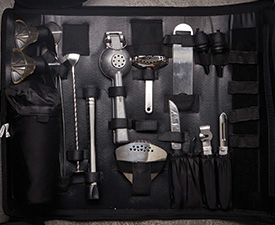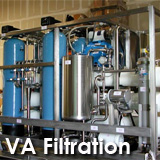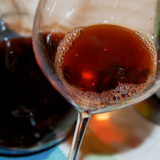Volatile Acidity, also known as VA - is a wine fault, an unpleasant characteristic of a wine. VA can be caused by several acids, even though its primary source is acetic acid and is the result of bacteriological infection through oxidation during winemaking. In quantities of 0.2 to 0.4 g/L, volatile acidity doesn't affect a wine's quality. At higher levels, however, VA can give wine a sharp, vinegary tactile sensation, which is caused by acetic acid. Extreme volatile acidity signifies a seriously flawed wine, and can be referred to as volatile.
The acetobacter bacteria, plus others are found on the surfaces of grapes, plus reside on winery equipment and in used oak barrels. They all have one thing in common. They are aerobic bacteria, needing lots of oxygen to reproduce. They are microscopic single celled organisms which have enzymes that work to oxidise alcohol into the vinegary smelling acetic acid.
While starting off with healthy undamaged grapes is a good start to making wines with low VA, it is no guarantee. Most acetic infections occur in the winery. The bacteria enjoy living in wines that are both low in acidity and sulphur dioxide. Oxygen is also slowly absorbed into the wine through the gaps between the staves in oak barrels. More damaging is when the level of wine in the barrel falls due to evaporation, and this lost wine is not regularly replaced. It is probably true to say that the most likely time for any wine to become acetic is during its barrel storage.
Preventing these conditions sounds simple, there are complicating factors. Oxygen is a necessary in the natural reactions which soften tannins and stabilise the colour of red wines. Wine yeasts also find it difficult to undertake clean and completed ferments if the oxygen levels in the juice are very low. So in many wines, having close to absolute zero dissolved oxygen is not the answer. Lastly poor bottling practices can also result in acetic wines. Filtration prior to bottling is known to reduce the number of viable bacteria.











